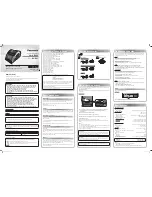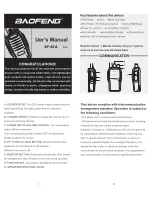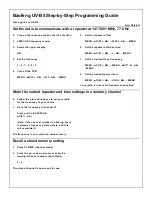
GLOSSARY
7-2
Doc No. 84382 Rev 2
THALES COMMUNICATIONS, INC. PROPRIETARY INFORMATION
Term
Description
TX NAC
Transmit Project 25 Network Access Code
TX TG
Transmit Talk Group
USB
Universal Serial Bus
XCVR
Transceiver
DEFINITIONS
Term
Definition
Active Channel
The Selected Channel is receiving a signal that is of sufficient strength to
overcome the programmed squelch level.
Bank
A bank is a group of zones. Zones can be assigned to banks during
programming. The radio can store up to sixteen banks consisting of 16
zones each. Banks may be assigned names of up to eight characters
Carrier Squelch (CSQ)
Carrier Squelch (CSQ) is a squelch system based on RF signal present.
It is adjustable and is also commonly referred to as Noise Squelch.
Channel
(xx channels) A group of characteristics, such as transmit / receive, radio
parameters, encryption coding. Squelch, modulation, and power settings.
Continuous Digital Coded
Squelch System (CDCSS)
CDCSS is a 23 bit data stream that is sent at a bit rate frequency of 134.4
Hz. It is also filtered prior to sending audio to the speaker. It is not
widely used, but is also known by other names such as DCS, DPL, and
others.
Continuous Tone Coded
Squelch System (CTCSS)
CTCSS is an audio tone between 67.0 Hz and 254.8 Hz that is attached
to the RF signal. It is used to filter out all unwanted communications
present on that channel. The tone is filtered out of the signal prior to
sending the demodulated audio to the speaker, which is why it is not
heard. It is known by several brand names, such as Private Line, PL,
Code Guard, and CG amongst others.
Typically CTCSS tones are used by repeaters to filter out unwanted
signals and also on a direct radio system to enable frequency sharing.
Control Channel
In a trunking system, one of the channels that is used to provide a
continuous, two-way / data communications path between the central
control and all radios on the system
Conventional
Typically refers to radio-to-radio communications, sometimes through a
repeater. The user shares a frequency, or frequencies, with other users
without the aid of a central controller to assign communication channels.
Therefore, the user should monitor each channel before transmitting to
avoid interfering with another user who may be transmitting.
HOME Channel
The Selected Channel when Scan is activated becomes the HOME
channel. It is added to the active Scan Plan if not already included.
Initial Synchronization
Initial synchronization controls the length of time that the radio sends out
a bit synchronization pattern.












































